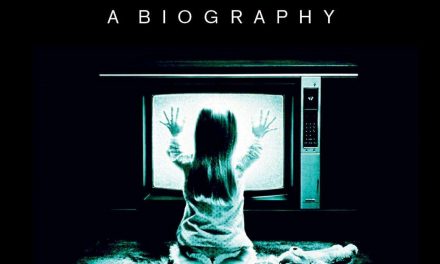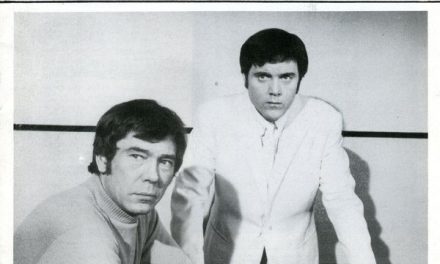Two weeks into my MA, I attended a conference. Left to my own devices amongst what I can only assume are high-profile names in the field of TV studies, I felt at times like a broken sieve, frantically trying to apprehend what keynotes and panels were trying to convey to me, often lacking context, and realizing that there are words that even Google cannot explain to me. At other times, I felt giddy at the prospect of what is ahead of me, synapses shooting and that lightbulb finally turning on. The panel “Tiktok, Memes and Snippets” felt like a safe choice to listen in on for a Gen Zer like me. And I was right, because I learned that TV studies has yet to find a way to encompass, map or visualize the vast content jungle that is TikTok. Through four presentations, the audience gained insight into projects trying to navigate this jungle and make sense of it all.
Professor Christine Piepiorka and PhD student Kim Hebben from the TU Dortmund proposed a new paradigm of (post)-televisuality by contextualizing post-TV in relation to time, space and play and thereby its digital instrumentalisation. By making experimentational media usage a necessary prerequisite of the expansion of TV, the “play” with and breaking down of content into quantitative snippets characterises a new paradigm. This fragmentation into snippets happens on multiple layers: platforms produce, spread and process content, but the fragmentation does not end there. The fragmented audience further disperses the snippets by repurposing, referencing and reenacting it back into the datastream. The economic processes involved in producing and distributing content disrupt and amplify it, propelling it into viral circulation and enhancing its reach, making snippets into the dominant currency of post-televisual television. This approach to a new understanding of (post)-TV left us pondering new definitions of post-TV, giving impulses for discussion.
Ellenrose Firth, a PhD student of the Sapienza University, and Alberto Marinelli (PhD) hypothesised new ways of categorising the changed mode of consumption of flow TV. Expanding on Lotz’ (2007) concept of “Personcasting” as a derivation of “Narrowcasting” in which the active user is pushed into the spotlight, they proposed a third phase: “Datacasting”. Focusing on TikTok, they introduce the concept of an algorithmic flow, combining that of the staccato flow, in which there is a scrolling motion implemented by the user when navigating content; and a broadcast-like logic, since the algorithm provides a pre-selection of content just as a broadcaster might. Thus, the phase of datacasting works alongside personcasting and has superseded narrowcasting. To investigate the extent to which users rely on the content the algorithm provides them with, Firth and Marinelli have conducted 20 qualitative interviews with TikTok consumers aged 18-34, trying to find out what role the algorithm plays in their enjoyment of the platform. Providing us with first quotes from these interviews, Firth revealed that interviewees were content with watching on small screens and what the “for you page” spat out for them, even watching entire movies split up into dozens of snippets and either investigating for the corresponding next part, or just waiting until the algorithm spat it out. Despite this seeming laborious, interviewees expressed that they preferred watching through TikTok due to its limitlessness, “TikTok is infinite”. This made evident that users turn to TikTok not just for user-generated content, but also for extremely fragmented snippets of traditional television content. Firth finally concluded her introduction with imagery based on the claim by interviewees that their “for you page” was a “work of craftsmanship” and a “partnership”, likening the methods of consumption of users to that of a curator, interacting with content so purposefully that the algorithmic flow moves its river bed exactly as wished for.
Following on, postdoc Jana Zündel from Goethe University Frankfurt presented research on the self-memefication of television series, which rely heavily on memeability (“simultaneously relatable and appropriable (audio-)visual extracts or fragments that are circulated on social media and video platforms such as Instagram, TikTok or YouTube”) as a factor of relevance and to reach their audience at all. Just as Piepiorka and Hebben proposed snippets in general as the currency of post-TV, mashed-up expressive images from TV-shows make for viable cultural capital among friends, in marketing and fan groups according to Zündel. She went on to point out how contemporary shows such as Euphoria (2019-) met this need with “memes in waiting”, meaning deliberately sculpted scenes, be it witty one-liners or strange encounters; but also arguing that television is inherently interlaced with meme culture from the get-go. In her paper, Zündel explored the intersection of televisuality and contemporary meme culture.
The panel concluded with Film University Babelsberg research associate Lisa Plumeier’s contribution, who is doing her PhD on user generated shorts on TikTok. Plumeier has conducted an auto-ethnographic study tracking and categorising popular references, texts and intertextual traces of popular culture with a focus on film, television and games. This study is part of a multi-method participatory study and aims to gain first impressions of existing types of references, appropriations and (re)contextualisation as well as locating network structures. TikToks referential structure – which encourages mimetic content – negotiates texts, references and practices from outside of its own platform in a very specific way. Thus, as a medium that incorporates media artifacts as a main source of content, TikTok is closely tied to traditional media formats such as films and television programmes. The gathered snippets from the auto-ethnographic study were used for a first content analysis (and some shown to us at the panel, to great amusement). The findings interestingly include niche-watching communities as mentioned by Firth, in which shows and films are consumed in the form of snippets on TikTok.
After the presentations, several questions were raised to be answered by all four researchers/research teams. Most memorably for me, one listener asked about corporate memes, such as those referenced by Pieporka and Hebben as well as Zündel: if the need for self-memefication is so great that TV productions – as hypothesised – anticipate this from the start and synthesise content accordingly, then how do the content-curating and infinitely-swiping users react to said content? Firth answered: not well, unless corporate users mimic typical user patterns, making the viewers think they are watching non-corporate user generated content. Immediately, a panel member referenced a popular meme about corporate content on TikTok having been made by “the intern”, upholding the illusion that the users are in charge of their algorithmic environment.
Overall, half-overwhelmed, half-enriched, I came home from my first research conference. I am motivated by the fact that despite algorithms and the data jungle presenting as a vast unknown, there are efforts being made to find approaches and methods to research them. And while this type of academic gathering is clearly not aimed at us grad students, I have taken away great impulses.
Laura Lutz is a freshly enrolled MA student of media studies at the Film University in Babelsberg. She earned her BA in communications at the Berlin University of the Arts.





